ASRock Core 100HT-BD : Bringing HTPCs to the Mainstream Market [UPDATED : Noise Issue]
by Ganesh T S on July 19, 2010 9:34 PM EST- Posted in
- Home Theater
- Arrandale
- ASRock
- Media Streamer
- Core i3
- HTPC
One of the most interesting aspects of the Arrandale platform is the fact that the GPU is integrated in the same package as the CPU. The GPU die also contains the PCIe and DDR3 memory controller. While the main CPU is fabricated in the 32nm process, the GPU die is fabricated in the 45nm process. Placing the GPU and CPU in the same package saves on power and also board costs. The graphics part of the GPU die in the package is an evolutionary version of the Intel G45 IGP. A comparison of the Intel HD Graphics in the Arrandales and the earlier G45 is provided below.

An interesting thing to note here is the availability of dynamic frequency scaling for the Arrandale GPU, which actually lowers the power consumption of the system. A 900 MHz GPU part on a typical Clarkdale system would up the TDP by 15W or more compared to the lowest end Clarkdale with a 733 MHz GPU. On the Core 100 HT-BD, however, overclocking doesn't require any special thermal arrangements. The higher frequencies kick in only when the load on the GPU becomes high.
We had earmarked the Clarkdales as the perfect HTPC platforms earlier this year. This Arrandale offering may actually tempt us to revise our opinions, given the form factor and the power profile. We will cover this in detail in the later sections. In the rest of this section, we will cover the features of the Intel HD Graphics engine, as it relates to HTPC users. Before going into the details, let us take a look at what Intel has improved in terms of video decode and processing in this iteration of their IGP.
DXVA Compatibility
Intel's support for DXVA came in for a lot of criticism during the G45 days. The paranoia inside the company made it impossible for open source enthusiasts to get hold of the special DXVA interface used by Intel. It used to be made available under NDA to various ISVs (Independent Software Vendors) such as Cyberlink, ArcSoft etc. Thankfully, things have been slowly changing for the better. Currently, most applications (except for VLC) are able to take advantage of the DXVA acceleration provided by the HD Graphics engine. The screenshot below gives us a quick idea of the DXVA capabilities of the Core i3-330M in the Core 100 HT-BD. It is interesting to observe that there is no VLD mode for VC-1, but we did observe 1080p VC-1 Blu-Rays play with less than 5% CPU usage on ArcSoft TMT. This just indicates that the interface to full acceleration mode for VC-1 is available only under NDA as of now.
HD Audio Bitstreaming
Right from its debut, the Arrandales have been able to bitstream HD audio from Blu-Ray discs played back through Cyberlink's PowerDVD or ArcSoft TMT. The Core 100 HT-BD is no different. We were able to play back all Blu-Rays with bitstreaming to the AV receiver, as the following screenshots show. In addition, hardware acceleration with Intel HD Graphics shows its class, with low CPU utilization being observed during playback. Despite the red spikes observed in the DPC Latency Checker program, we didn't notice any audio dropouts or stutters in the video.
Using the open source ffdshow Audio Decoder, HD audio can also be bitstreamed out of standalone MKVs and M2TS files. (More on this in the next section)
With the above features, Intel HD Graphics seems to be a winner, and the Core 100 HT-BD could potentially be the utopian HTPC that enthusiasts have been searching for. Is that really the case?
Driver Support - Intel Misses the Boat!
Since the release of the G45, videophiles have been clamouring for the support of 23.976 fps display refresh rate. Intel caved in and released a driver where you could choose 23 Hz in the graphics control panel. Unfortunately, this only results in a refresh rate of 24 fps. While watching videos encoded at 23.976 fps, this results in a small stutter every 40 seconds or so. Most people get past this by setting the refresh rate of their display to 60 Hz. However, dedicated enthusiasts still see this as a major shortcoming of the platform.
Another issue which has remained since the G45 days is the efforts taken to open up the DXVA specifications of the GPU for open source developers. Lot of progress has been made over the years, but full VC-1 decode acceleration remains elusive in applications like MPC-HC or VLC. As we discussed in the DXVA Compatibility subsection, the VC1_VLD mode which is commonly utilized by open source video decoders is absent. However, Intel's marketing team does indicate complete VC-1 decode acceleration. We can only surmise that this is made available for the Microsoft and other ISV decoders to make use of.
The drivers supposedly support advanced deinterlacing, but users do not have as much control over the algorithms used as they have when using ATI HTPC cards such as the Radeon 5xxx series. Noise reduction algorithms are also not transparent to the users. The frequency of driver updates is rather low, and issues continue to remain unaddressed.
If the end user can put up with these iGPU limitations (personally, I can), the Core 100 HT-BD is indeed a very good choice. This will be further elaborated in the next few sections.


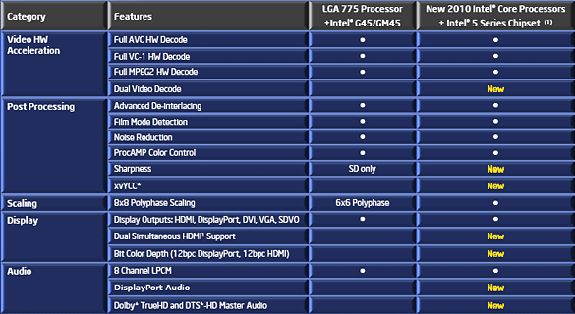
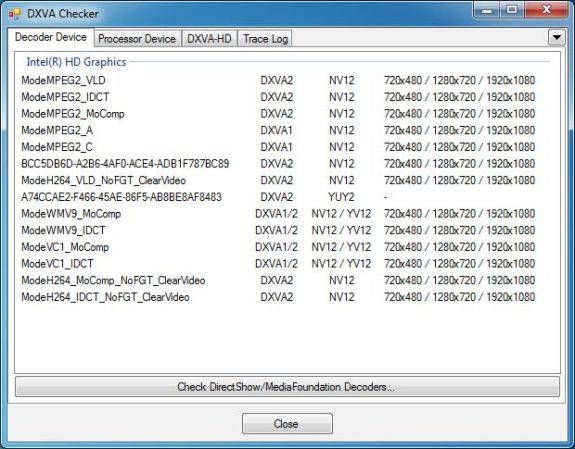
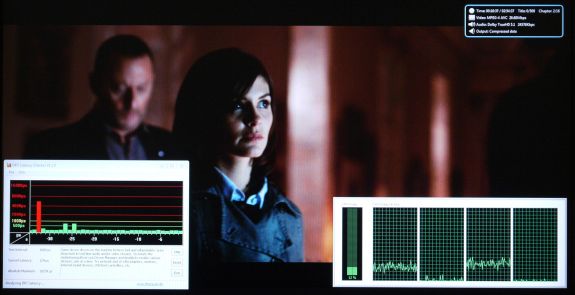
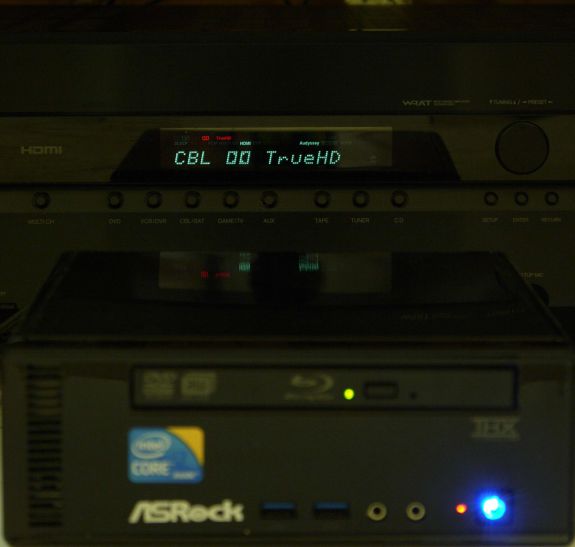
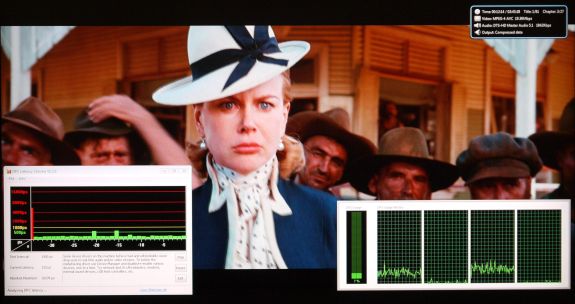
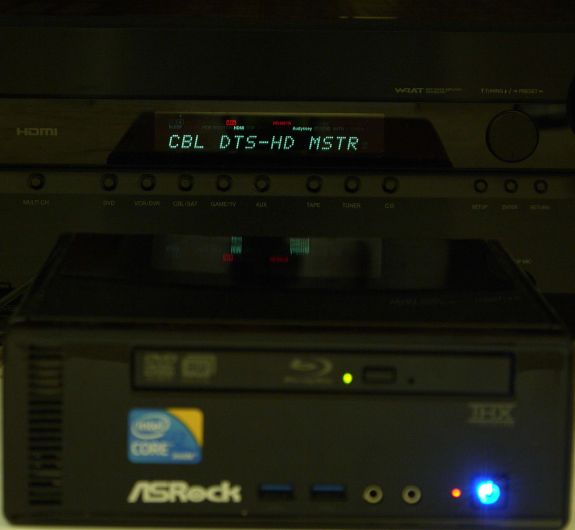








107 Comments
View All Comments
Goty - Monday, July 19, 2010 - link
Unfortunately, the lack of even the ability to include a TV tuner in this system kills it for me. If all I am going to do is use it as a Blu-Ray player and DLNA client, I've already got a PS3 that handles both admirably.Allio - Tuesday, July 20, 2010 - link
I agree. I don't understand the niche this system fills - if your needs aren't met by the existing set-top devices, you probably want to do serious gaming on it or use it as a DVR. What exactly does this do better than an ION system, other than be more expensive? Is anyone really encoding video on their HTPCs? That's what my power hungry quad core is for.RamarC - Tuesday, July 20, 2010 - link
ditto. as soon as i saw the external power supply, i immediately started the laptop comparison. it's bigger than a laptop but still has the same limited expansion capability. considering i just got similar a i3 based laptop for a niece going to college for only $550, i can't see why i wouldn't go with the lappy over this mini box.ganeshts - Tuesday, July 20, 2010 - link
RamarC,After having used this unit for 2 weeks in the process of writing the review, I do have to say that the same thought crossed my mind.
However, ASRock does have some compelling points:
1. HTPC centric features such as Instant Boot
2. MCE Remote + I/R Receiver
3. AiWi gaming feature
4. Expansion slot for 2nd hard disk
5. Better audio codec
6. Blu-Ray drive (may also be on the laptop)
Basically, the laptop's monitor & keyboard / trackpad get exchanged for the above features and the unit ends up at the same cost as the notebook.
quiksilvr - Tuesday, July 20, 2010 - link
That's not worth it. I suggest you return it and get a notebook. There are laptops out there with quick launch, an IR receiver, discrete graphics for actual gaming, usb ports for that 2nd hard disk, and expresscard slots for better audio codecs.And on top of all that, you get a screen, a keyboard and a trackpad and mobilitiy.
If this HTPC had discrete graphics and a $500 price tag instead of a $600-$700, then it would be pretty cool. But given that it doesn't, it's not worth it.
ganeshts - Tuesday, July 20, 2010 - link
quiksilvr,This HTPC is supposed to be a companion box for a TV, and as such its 'non-mobile' nature is supposed to lend itself to tasks such as running downloads overnight, and recording TV programs with external tuners and so on and so forth.
For a laptop with the specs you mention, the cost is probably going to be in the $900 - $1000 range. We have done the cost analysis, and it looks like ASRock is just charging a $90 premium (probably lesser if you go with the DVD drive). I believe this will be a compelling investment for people thinking about streamers such as the C-200 from PopCornHour or the Dune and other similar products. They can get an exponential rise in performance and available utilities for a couple of $100s more.
Yes, I agree that notebooks could be a great choice.. provided they fit your usage scenario.
Milleman - Wednesday, July 28, 2010 - link
I use the Zotac MAG Ion w. Intel 330, together with XBMC. Works just great as a streaming device for all my movies on the media server.ganeshts...
You should consider to include XBMC Live (dedicated SBMC Linux installation) in your reviews as well.
ganeshts - Wednesday, July 28, 2010 - link
Milleman,Thanks for your suggestion. XBMC Live doesn't support HD audio bitstreaming, which is fast becoming one of the most important aspects for HTPCs.
I will definitely keep in mind your suggestion for future reviews.
doxxius - Wednesday, July 28, 2010 - link
Well, I use the separate optical audio output jack on the rear which I connect to the audio receiver. Works great for me. But maybe some prefer to have it inside the HDMI cable.ganeshts - Tuesday, July 20, 2010 - link
For HTPC enthusiasts:1. This box can bitstream HD audio to the A/V receiver, while the ION can't.
2. The CPU is much more powerful than the Atom, and the user has the option to let the box run overnight to do tasks (such as downloads and encodes) without running their quad cores. This is a greener alternative.
The opinion that people don't run encodes on their HTPCs is because of the fact that such form factor machines (usually based on Atom) aren't capable enough. With this Arrandale offering, that possibility is getting opened up.
Usage as a DVR is possible using an external USB TV tuner.